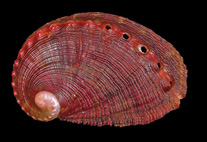Abstract
Pirabasoporella gen. nov. is introduced for three new bryozoan species from the Early Miocene of the tropical western Atlantic. The genus is placed in the family Jaculinidae Zabala, a peculiar group of cheilostome bryozoans characterised by reticulate colonies formed by uni- or biserial branches that are connected by kenozooidal struts. This colonial morphology superficially resembles colonies of the Paleozoic order Fenestrata (Stenolaemata) and some Recent Cyclostomata. As jaculinid colonies are anchored to soft sediments via rhizoids, however, they differ in life habit from Paleozoic and modern fenestrate colonies, which are firmly attached to stable substrata by an encrusting base.
The three new species are Pirabasoporella atalaiaensis n. sp. from the Brazilian Pirabas Formation, Pirabasoporella baitoae n. sp. from the Baitoa Formation (Dominican Republic), and Pirabasoporella chipolae n. sp. from the Floridan Chipola Formation. Their presence in the Early Miocene western Atlantic represents the earliest record of Jaculinidae, and suggests that the origin of the family, the only living species of which are known from the eastern Atlantic and Mediterranean Sea, extends well into the Paleogene.
The Jaculinidae is here transferred from the lepraliomorph superfamily Schizoporelloidea Jullien to the umbonulomorph Lepralielloidea Vigneaux owing to the partly umbonuloid frontal shield and non-schizoporelloid ovicell.

